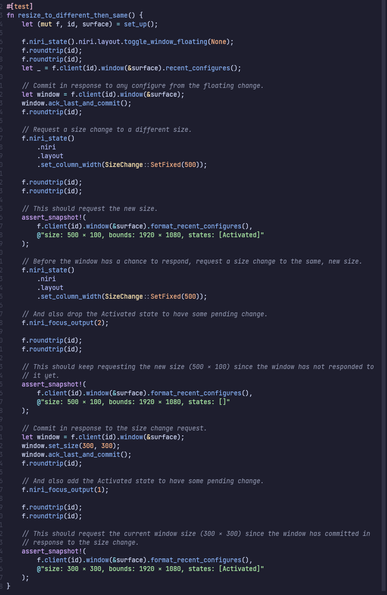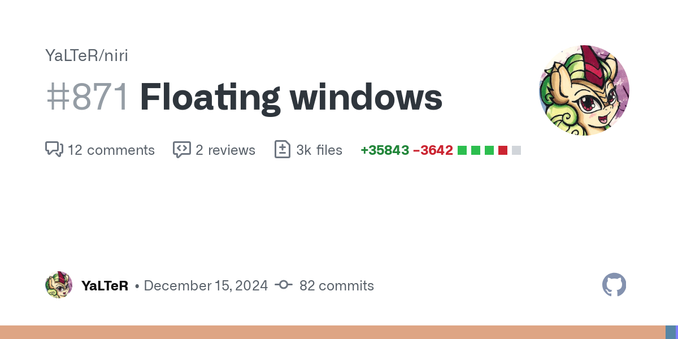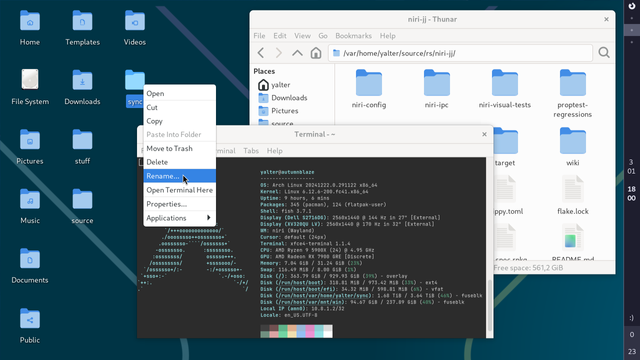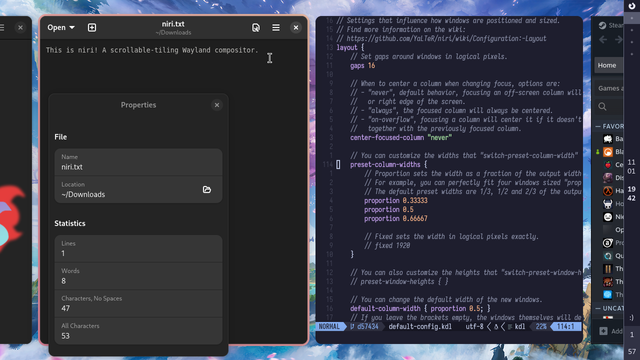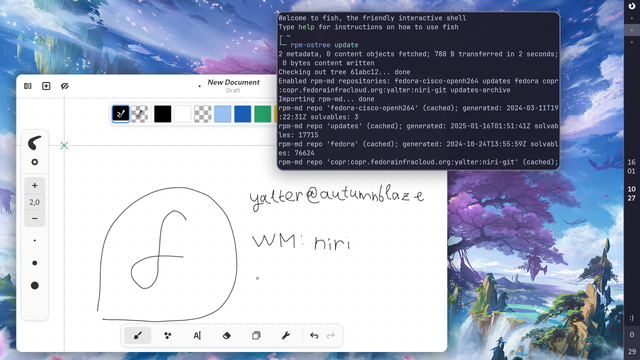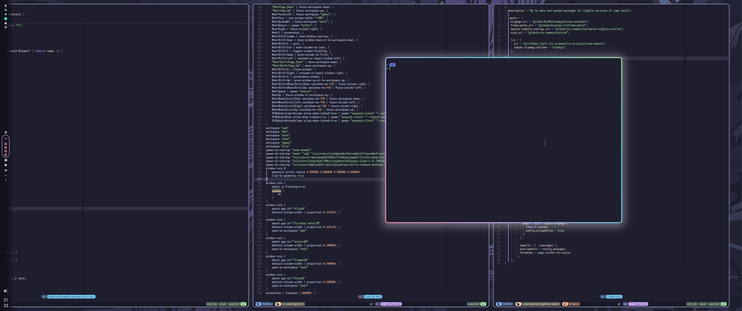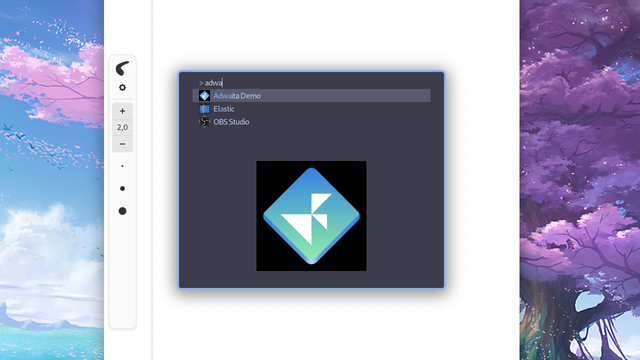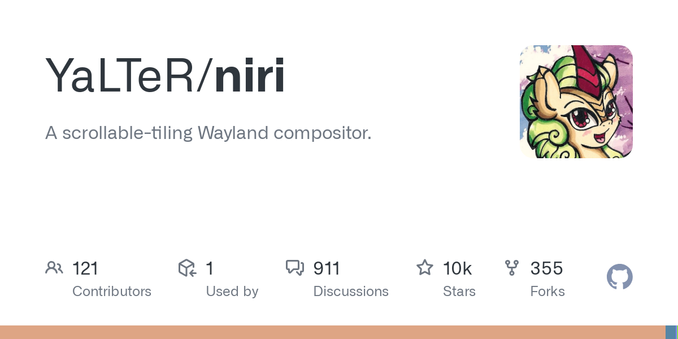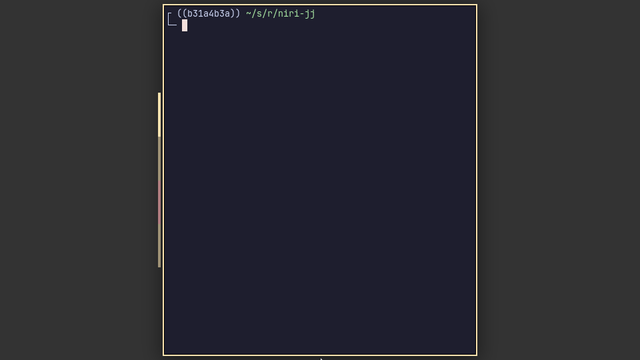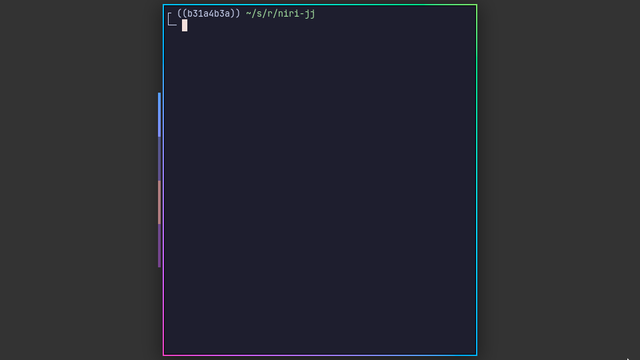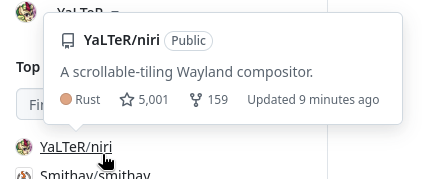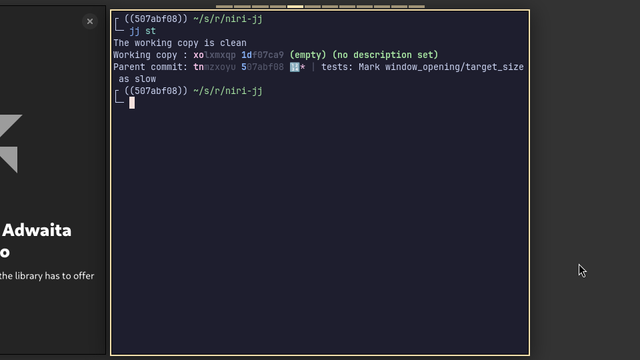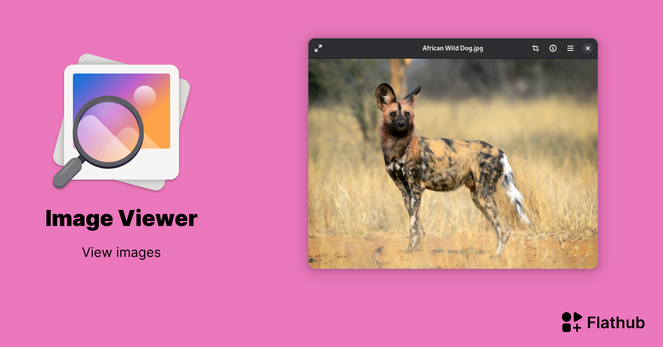@YaLTeR
spelling out the whole 2024 seems a tad redundant
ok but what if niri lives to be 100 years old? wouldn't want another Y2.1K now would we?
(even if redundant I do think it's more aesthetically pleasing, and it's not like the length has any practical downside?)it took me an embarrassingly long time to realize that the year.month in Ubuntu is, in fact, year.month, and four digits would clear that up a bit.
honestly yeah same, but now that I am aware of this and I've seen it in several other distros, that scheme reads to me as usually-semiannual. and given that niri is a compositor which is such a core component of a system that it's not uncommon to align with distro releases, it would make sense just by the class of software for niri to have such s release schedule.
this is, additionally, the only argument I can think of against YY.MM. like it's all arbitrary anyways and it doesn't really matter in the end because you do have to pick something, but personally I like four-digit year betterI would prefer zero-padded double-digit month [because it's more obviously rooted in the Georgian calendar]
yeah I have no opinion in favor of or against this.
---
also worth considering: at a certain point, a patch release might look like it's the full date. like when I installed Sharkey, I assumed 2024.5.3 meant it's from the third of May (it means that's the third release in May). so maybe a different separator is worth using, to show that the third field isn't a date? I guess it's "obviously"
+.


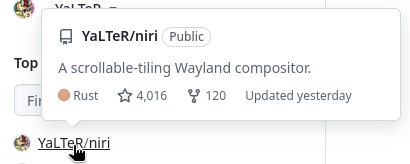
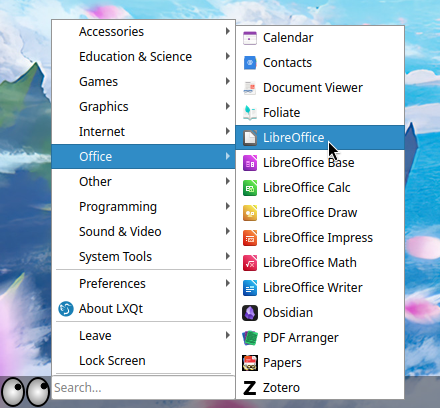

 Went really well, got many interesting questions!
Went really well, got many interesting questions!
